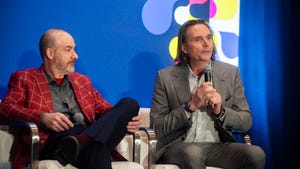Enterprise Software Deals Could Play Havoc With ROI
The planned J.D. Edwards-PeopleSoft deal and Oracle's bid to acquire PeopleSoft could cost businesses millions of dollars on their IT investments.

Mergers and acquisitions in the computer industry can wreak havoc on businesses' IT infrastructures. But when enterprise applications are involved, they can mean millions of dollars down the drain.
That's why Oracle's $5.1 billion hostile takeover attempt of PeopleSoft Inc., and PeopleSoft's proposed $1.76 billion acquisition of J.D. Edwards & Co. may have some companies wondering whether their IT investments were for naught.
Although the leadership of both PeopleSoft and J.D. Edwards' have committed to keeping most of J.D. Edwards' ERP portfolio alive, including the AS/400 platform, if the acquisition goes through, some of the two vendors' applications will disappear. And if Oracle succeeds in its bid to buy PeopleSoft, chairman and CEO Larry Ellison has said his company will no longer actively sell PeopleSoft applications and will ultimately move those apps to an Oracle platform.
That would mean customers would have to change out software before they'd planned. Businesses typically run enterprise software, such as ERP apps, for several years before replacing them—and usually don't get a return on investment for several years after implementation.
"These investments tend to last a long time, eight to 10 years," says Tom Pisello, founder and president of Alinean LLC, a consulting firm that works with CIOs, IT consultants, and vendors to create strategies for achieving return on investment. "For example, if you standardize on PeopleSoft for human capital management, that's an eight- to 10-year commitment. You may upgrade once, but you typically aren't going to consider switching to another vendor."
ERP implementations can take as long as two years or more to implement, Pisello says. Case in point: Clothing manufacturer VF Corp. has already spent at least seven years implementing its ERP software—and doesn't expect to finish until 2005 (see New Fashion).
And getting ROI out of ERP apps takes time. "Projects started in 1999 or 2000 likely still haven't paid for themselves yet," Pisello says.
Most of the time, the apps have to be customized and integrated with several other enterprise systems, which piles on the expenses. "The average customer spends an additional three to five times the cost of the software," says Brian Sommer, president of TechVentive, a technology research and consulting firm. "Many PeopleSoft customers have paid seven-figure sums to license a large number of PeopleSoft applications, so when you add three to five times that, these are not small deals."
Until the dust settles in the ERP market shuffle, both Sommer and Pisello recommend IT executives think through enterprise application implementations. "Know that a vendor with whom you are doing business today, even if it's a large vendor, may have a different name in two or four years," Pisello says.
He also recommends companies keep customization to a minimum if at all possible. "Thing long and hard about every bit of customization that you do, because you may have to redo it because of this market volatility."
If a project is relatively small—just one or two apps that can be installed in a few months' time—Sommer suggests companies push ahead rather than rearrange their IT project schedules and potentially lose money that's been budgeted. But companies may want to wait on major upgrades or big purchases.
About the Author(s)
You May Also Like
Generative AI: Use Cases and Risks in 2024
May 29, 2024Smart Service Management
June 4, 2024Tales of a Modern Data Breach: The Rise of Mobile Attacks
June 11, 2024





